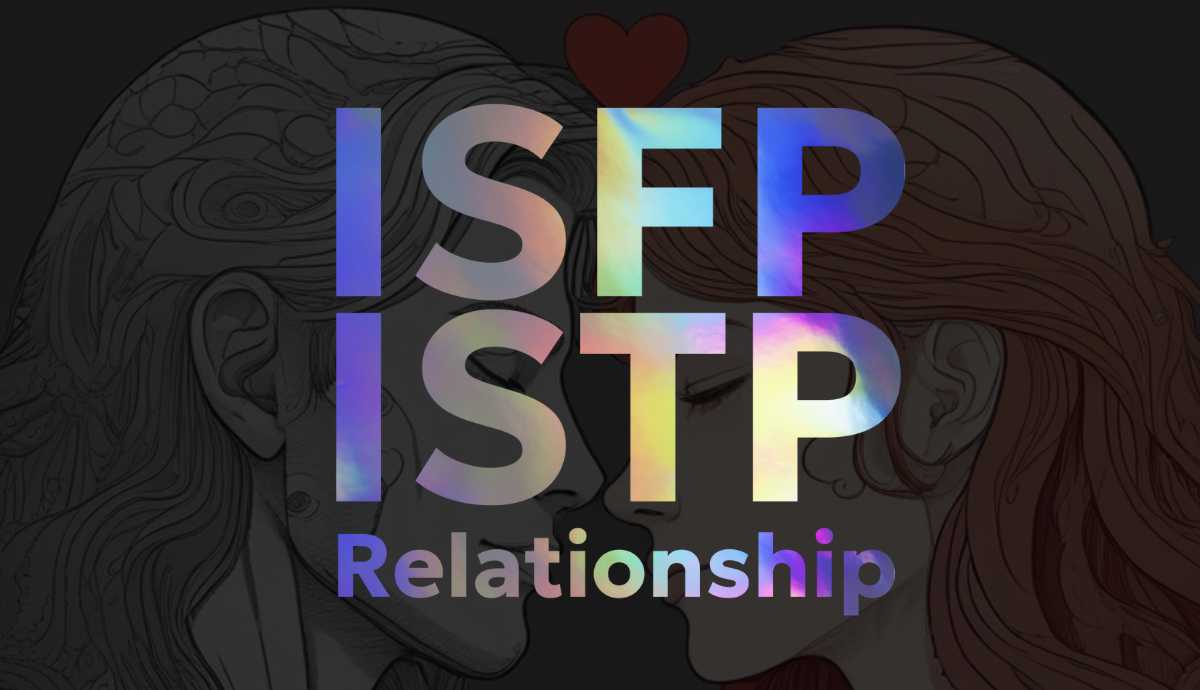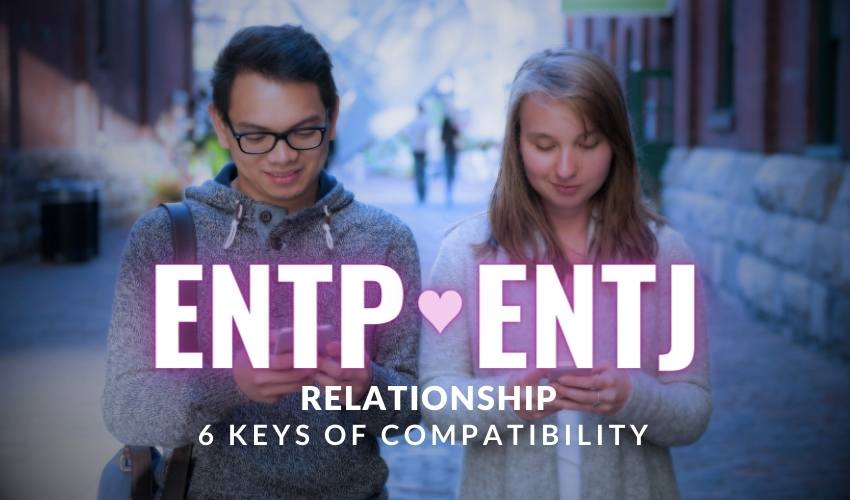The MBTI types, ISFP and ISTP are the introverted half of the temperament group classified as “the Artisans”. This grouping, as defined by MBTI analyst David Keirsey, is distinguished by its generosity, impulsivity, excitement and adventurousness. They, along with the ESTP and ESFP are types who are concrete in their use of language, trusting in their instincts and active seekers of stimulating experiences.
As introverted Artisans however, ISFP and ISTP are more reserved. Their focus is on operating tools and techniques and the honing of their craft and personal interests. They are less verbal than their extroverted counterparts who are drawn to more performative forms of expression.
When it comes to relationships, the ISFP and ISTP mate seeks to be playful with their partner and to lighten the mood when things get tense. Artisan couples get along well because of their common values but their marriages tend to be unstable. Many Artisans end up with a Guardian spouse which is a match that offers a more complementary balance.
Nevertheless, an ISTP and ISFP romance can work out nicely but there are also potential problems to watch out for. Here is a look at 5 key dynamics of this relationship that highlight the benefits and drawbacks associated with this MBTI type pairing.
1. Concrete Communication.
Communication is a strong point in the ISFP and ISTP relationship. Not because there is so much of it, but because there is an ease of understanding on account of their mutual perceiving preference. As David Keirsey described it, SP types are concrete in their use of language and utilitarian in their use of tools.
ISFP and ISTP communicate on a similar wavelength. They both appreciate directness and clarity, avoiding the pitfalls of misinterpretation that often plague more abstract communicators. This shared communication style fosters a sense of trust and reliability, as each partner knows they can count on the other to express their thoughts and feelings honestly and straightforwardly.
2. Playful Companionship.
As a couple, these two can bond over their shared appetite for fun and excitement. Even as introverts, they like to travel and explore, doing exciting things and engaging their senses. To this extent, they can connect more closely than with any other type. When it comes to Love Languages, a survey on ThoughtCatalog.com showed that ISFPs voted “Quality Time” as their top preference while “Physical Touch” was most popular among ISTPs. Although not reflected in the survey, SP types also delight in the act of giving gifts as an expression of love.
While there are a lot of good times to be had between them, a potential drawback of Artisan-Artisan relationships is an overfamiliarity that can get old or even turn competitive. Without enough counterbalance in temperament, the tendency for both partners to live intensely and indulgently, can lead to potential burnout and loss of interest. This scenario of two Artisans burning with passion for each other only to fizzle out soon after is not uncommon.
3. Codependency and Enablement.
Both types share a spontaneous, present-focused approach to life, which can lead to a deeply passionate and adventurous bond. However, this spontaneity can also pose challenges, particularly in how they enable each other’s tendencies toward indulgence, carelessness, and impulsivity.
Both ISTPs and ISFPs are driven by their personal values and experiences, often making decisions based on instincts rather than long-term planning. This shared inclination can result in a joint tendency towards risky decisions, or otherwise prioritizing short-term goals over future stability. For example, they might indulge in activities or purchases that provide instant gratification without considering potential consequences, leading to financial strain or unmet responsibilities.
Additionally, both types may struggle with setting boundaries, particularly when it comes to moderating their behavior. ISTPs, with their love for action and challenge, might push the boundaries of risk-taking, while ISFPs, driven by their quest for aesthetic and sensory experiences, may be prone to overindulgence in comforts or pleasures. When these tendencies are not balanced by a more deliberate and prudent approach, the couple may find themselves reinforcing each other’s weaknesses rather than helping each other grow.
4. Interpersonal Connection vs. Personal Authenticity.
ISTP’s inferior Extraverted Feeling (Fe) and ISFP’s dominant Introverted Feeling (Fi) represent two distinct approaches to managing and expressing emotions, which can significantly influence how these types interact and relate to others.
ISTPs, with their inferior Fe, often struggle with understanding and expressing their emotions outwardly. Since Fe is their least developed function, ISTPs might find it challenging to articulate their feelings or to engage in emotional exchanges that require empathy or emotional validation. As a result, they might appear detached or indifferent in emotional situations, preferring to solve problems with logic rather than addressing the emotional aspects directly. When they do express emotions, it can be in a somewhat awkward or unrefined manner, as they are not as naturally attuned to the emotional needs of others or themselves.
ISFPs, on the other hand, have a well-developed dominant Fi, which grants them a strong internal compass of values and emotions. Fi allows ISFPs to deeply understand and process their own feelings, making them more in tune with their inner emotional value-system. They are typically more comfortable expressing their feelings in a way that is true to their personal values, though this expression is often private and subtle. ISFPs might not always share what they feel openly with others, but they are very aware of their emotional states and are guided by a desire to stay true to what feels right for them.
In a relationship, this distinction can lead to challenges in emotional communication. ISTPs may struggle to connect on an emotional level due to their less-developed Fe, while ISFPs might feel the need for more emotional depth and authenticity in the relationship, driven by their Fi. Understanding and respecting these differences is key for both types to navigate their emotional orientations.
5. Periodic Withdrawal.
In a relationship, ISFP and an ISTP both share a deep need for periodic withdrawal due to their introverted nature. As introverts, they each require time alone to recharge, reflect, and process their thoughts and emotions. This need for solitude is essential to their well-being and allows them to maintain their sense of individuality within the relationship.
For the ISTP, this withdrawal often takes the form of engaging in solitary activities that involve problem-solving, hands-on work, or exploring their interests. They may need time away from social interactions to focus on their projects or hobbies, which helps them regain their mental clarity and energy.
The ISFP, on the other hand, uses their alone time to connect with their inner emotional world. This period of introspection allows them to sort through their feelings and align their actions with their deeply held values. Solitude is crucial for ISFPs to maintain their emotional balance and creativity.
Understanding and respecting each other’s need for periodic withdrawal can strengthen the relationship between an ISFP and an ISTP. By allowing space for these necessary retreats, both partners can return to the relationship with renewed energy and a deeper appreciation for each other, ensuring that their connection remains strong and harmonious.
| ISFP | ISTP | |
|---|---|---|
| dominant | Introverted Feeling (Fi) | Introverted Thinking (Ti) |
| auxiliary | Extraverted Sensing (Se) | Extraverted Sensing (Se) |
| tertiary | Introverted Intuition (Ni) | Introverted Intuition (Ni) |
| inferior | Extraverted Thinking (Te) | Extraverted Feeling (Fe) |
Pros:
- Adventure Awaits: When an ISFP and an ISTP come together, get ready for an adventure like no other. Their shared love for spontaneity and exploration fuels an exciting journey filled with new experiences and thrills.
- Creative Collaboration: Both types possess a natural talent for creativity and hands-on problem-solving, making them a powerhouse duo when it comes to artistic endeavors, DIY projects, or building something from scratch.
- Independent Spirits: ISFPs and ISTPs value their independence and freedom, allowing each other the space to pursue their passions and interests without feeling constrained or suffocated.
- Easygoing Vibes: With their laid-back and easygoing nature, ISFPs and ISTPs create a relaxed and stress-free atmosphere where both partners can feel comfortable and at ease.
- Shared Interests: Whether it’s exploring the great outdoors, indulging in adrenaline-pumping activities, or simply enjoying the beauty of art and music, ISFPs and ISTPs share a plethora of interests and hobbies that keep the sparks flying.
- Practical Solutions: ISTPs’ practicality and technical expertise complement ISFPs’ resourcefulness and intuition, allowing them to tackle challenges with a balanced approach that combines creativity with logic.
- Mutual Respect: Despite their occasional differences, ISFPs and ISTPs share a deep respect for each other’s skills, talents, and individuality, fostering a relationship built on mutual admiration and appreciation.
Cons:
- Decision-Making Dilemmas: Both types may struggle with making decisions, especially when it comes to long-term commitments or future plans, leading to indecisiveness and uncertainty.
- Communication Challenges: ISFPs’ preference for harmony and ISTPs’ reserved nature can create communication barriers, making it difficult for both partners to express their thoughts and feelings openly.
- Emotional Sensitivity: ISFPs’ sensitivity to criticism may clash with ISTPs’ blunt and straightforward communication style, potentially leading to hurt feelings or misunderstandings.
- Risk-Taking Tendencies: While ISFPs may crave excitement and novelty, ISTPs’ appetite for risk-taking may push boundaries too far, leading to conflicts over safety and responsibility.
- Conflict Resolution: Both types may avoid confrontation and conflict, preferring to sweep issues under the rug rather than addressing them directly, which can lead to unresolved tensions and resentments.
- Need for Freedom: While both ISFPs and ISTPs value independence, they may struggle to balance their need for freedom with the demands of a committed relationship, leading to feelings of suffocation or resentment.
- Long-Term Planning: ISFPs’ live-in-the-moment attitude may clash with ISTPs’ desire for stability and security, leading to differences in long-term goals and aspirations.
In summary, the ISFP-ISTP relationship offers a thrilling blend of adventure, creativity, and independence, but it also presents challenges related to decision-making, communication, and conflict resolution. Yet, with patience, understanding, and a shared sense of adventure, these two personalities can forge a deeply fulfilling and passionate partnership that celebrates the beauty of living life on the edge.
Want to know your astrology placements? You can generate your astrology chart here with our free birth chart generator tool.

Related Posts:
- ISFP Shadow: The Dark Side of ISFP
- ISFP Weaknesses; 7 Struggles of Being ISFP
- 12 Shades of ISFP: MBTI & the Zodiac
- ISTP Shadow: The ISTP Dark Side
- 6 High-Earning ISTP Careers
- 12 Shades of ISTP | MBTI & The Zodiac
- American Presidents Ranked By Zodiac Sign - January 20, 2025
- ESTP and ESFP in love: 6 Dynamics of Their Relationship - September 4, 2024
- ISFP and ISTP in love: 5 Dynamics of their Relationship. - August 28, 2024








